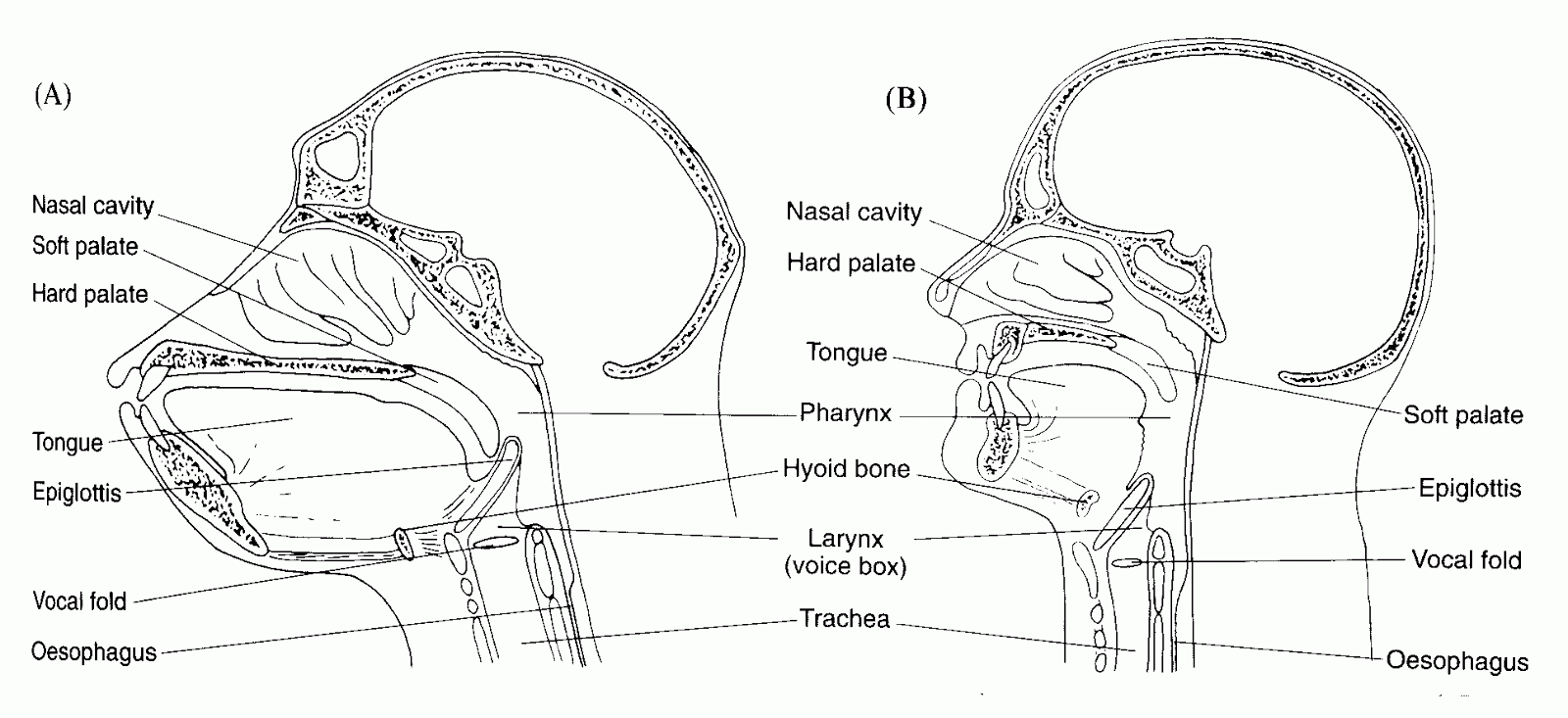Chimpanzees are known for being the closest relatives to humans genetically, sharing over 98% of our DNA. Though, it doesn’t take a biologist to figure out some of the major differences between us and our genetic cousins. However, one question that comes up a lot regarding all animals is the difference in our ability to communicate through speech. Why is it that chimpanzees, as well as other great apes, who so closely resemble our DNA, can’t perform one of the simplest staples of human interaction?

Contrary to some beliefs, the issue is not one that has to do with the brain. At least not entirely. Chimpanzees, as well as other apes, have proven their capability to understand language on a basic level through the use of sign language. It’s hard to say whether or not they have the ability to think in terms of grammar, because within their current “language,” apes tend to only speak about the present. This means that we don’t know if they haven’t developed a form of past and future tense due to actual mental restrictions, or simply the lack of the need to. Regardless of their brain’s capacity to understand grammar and complex language, the use of sign language still proves that the speech barrier between humans and apes does not have to do with the genetic ability to learn some kind of language, simple as one may be, but rather comes down to more physical reasons.

Physically speaking, apes, such as chimpanzees, have their vocal chords located higher in their throat than humans. Additionally, as mentioned in a special on NPR which quotes Dr. Philip Lieberman, one of the reasons our necks got longer was the downward movement of our tongues over time, which also brought the larynx down with it. With this space in our mouth and the shape of our tongues, we have the ability to move them up and down, as well as forward and backward, contrary to chimpanzees, whose tongue movement is mostly in-out.

While many of the details of these reasons are still being researched, unless the need arises for natural selection and evolution among the great apes to allow for changes in their tongues and vocal structures, it can be assumed that we won’t be hearing any chimpanzees speaking full sentences any time soon. However, if studies continue down the path of developing complex sign language between us and our fellow great apes, we could see any number of breakthroughs in understanding the actual mental capacity of these creatures, and whether or not they posses the ability to think beyond the present tense.
Sources:
Research:
http://www.alphadictionary.com/articles/ling002.html
http://www.livescience.com/46853-can-apes-speak-like-humans.html
http://www.daviddarling.info/childrens_encyclopedia/Speak_Chimpanzee_Chapter3.html
http://www.npr.org/templates/story/story.php?storyId=129083762
http://crankylinguist.blogspot.com/2010/10/chimp-vs-human-vocal-tracts.html
http://www.dailymail.co.uk/sciencetech/article-1227157/Why-chimps-talk-Genetic-study-sheds-light-closest-cousins-stay-mute.html
Media:
http://www.chimpanzeefacts.org/wp-content/uploads/chimpanzee-3.jpg
http://2.bp.blogspot.com/_rvOgdkttb5c/TKs5c9vFN4I/AAAAAAAAAPA/RJrVX4ZcHKQ/s1600/Vocal+Tracts.gif
http://sites.jmu.edu/bio103shook/files/2016/03/apes_595.jpg









 Then we go back to the study at Azabu University in Sagamihara, Japan, which was published in “Science”. The result finds that gazing from pet dogs made high levels of oxytocin contents in owner’s urine samples, and vice versa. Therefore, the relationship between owners and pet dogs becomes closer and closer. This positive feedback loop, he says, may have played a critical role in dog domestication. In this study, the dogs were males and females, spayed, neutered and intact. The breeds included Golden retrievers, standard poodles, miniature Dachshunds, miniature Schnauzers, a Jack Russell Terrier, and two mixed breed. So the samples are very representative. And I think the conclusion is convincing.
Then we go back to the study at Azabu University in Sagamihara, Japan, which was published in “Science”. The result finds that gazing from pet dogs made high levels of oxytocin contents in owner’s urine samples, and vice versa. Therefore, the relationship between owners and pet dogs becomes closer and closer. This positive feedback loop, he says, may have played a critical role in dog domestication. In this study, the dogs were males and females, spayed, neutered and intact. The breeds included Golden retrievers, standard poodles, miniature Dachshunds, miniature Schnauzers, a Jack Russell Terrier, and two mixed breed. So the samples are very representative. And I think the conclusion is convincing.